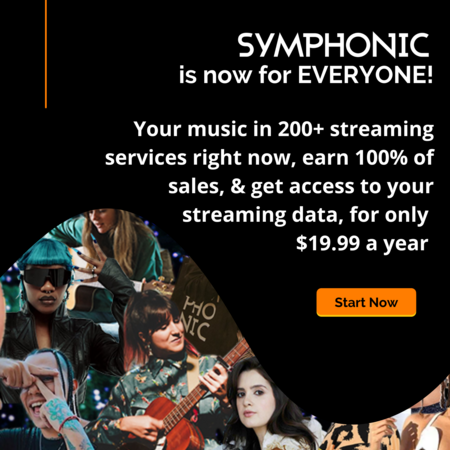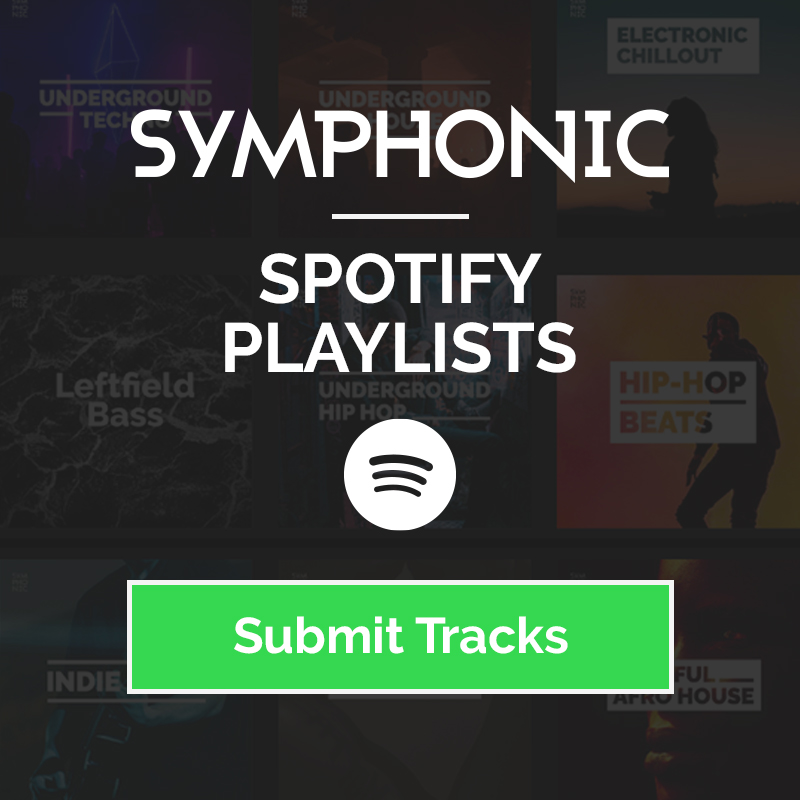
by Francesca | May 2, 2024 | Music Marketing
YouTube offers tons of features to help creators like you optimize the money they’re making from the platform. Are you utilizing everything they have to offer? If not, here are some big ones you definitely don’t want to miss in 2024…
7 Ways To Make Money on YouTube as a Musician
YouTube Partner Program
The YouTube Partner Program lets qualifying Creators tap into many different ways to earn revenue. Over the last 3 years, they’ve paid out over $50B to creators through this program and they don’t plan on stopping anytime soon. With this program, artists can utilize ads on long-form videos, between short-form videos, and from YouTube Premium subscribers watching your content to earn money. Not only does this program give you the ability to utilize ads on YouTube, it also gives you additional tools like Shopping, Super Chat, Super Stickers, guaranteed access to their customer support team, and so much more.
Keep in mind, not everyone is eligible for this program. To qualify, you need to be in good standing with YouTube, follow all the YouTube monetization policies, and live in a country/region where the YouTube Partner Program is available. In addition, you must have 500 subscribers with 3 public uploads in the last 90 days, and either 3K valid public watch hours in the last 12 months OR 3M public Shorts views in the last 90 days.
- If you want to unlock even more benefits, including revenue sharing from ads and YouTube Premium, you’ll need at least 1,000 subscribers and either 4K valid public watch hours in the last 12 months OR 10M valid public Shorts views in the last 90 days.
Ad Revenue & YouTube Premium
Once you’re in the Partner Program, you can choose from various kinds of ad options for your videos, including display ads, overlay ads, skippable video ads, non-skippable video ads, and sponsored cards. These ads may appear before, during, or after your videos, depending on YouTube’s ad placement algorithms. Previously, creators had individual ad choices for pre-roll, post-roll, skippable, and non-skippable ads. Now, when you turn on ads for new long-form videos, YouTube will show your viewers pre-roll, post-roll, skippable, or non-skippable ads whenever appropriate through their algorithm.
It’s important to note that when ads are displayed on your videos, YouTube shares a portion of that ad revenue with you. The exact amount of revenue earned depends on factors such as the ad format, viewer engagement, and advertiser demand. That said, with YouTube’s analytics tool, you can easily track your earnings as you grow on the platform.
Super Chat & Super Stickers
Super Chat and Super Stickers are ways to connect with your fans during live streams and Premieres. Your viewers can buy Super Chats to highlight their message within the live chat or Super Stickers to get an animated image that surfaces in live chat. Similar to emotes on Twitch, fans typically match these animated images to your personality, engaging the chat and showing their support through a highlighted moment just for them. Once a fan purchases a Super Sticker for at least $5, a countdown ticker will show how much longer their Super Sticker will be pinned at the top of the chat.
If you’re eligible for this feature, click here to learn how to enable Super Chat or Super Stickers.
Channel Memberships
YouTube Channel Memberships are a subscription-based feature that allows viewers to become paying members of your channel in exchange for exclusive perks and benefits. Members pay a monthly fee that’s set by you, and they can gain access to perks like custom badges and emojis, members-only community posts and live streams, early access to content, and special discounts on merch. This model provides artists like you with an additional revenue stream and helps to foster a closer relationship with your most dedicated fans at the same time.
In addition, you can offer multiple tiers of membership, each with its own set of perks and price points, catering to different audience segments. By offering exclusive content and benefits, you not only incentivize viewers to become paying members, but also create a sense of belonging within your community while generating additional income to put back into your craft.
Content ID
YouTube’s Content ID is a digital fingerprinting system that content creators (like record labels and artists) can use to easily identify and manage their copyrighted content on YouTube.
YouTube BrandConnect
YouTube BrandConnect is a self-service platform that helps creators connect with brands that are interested in branded content campaigns. This feature provides tools and resources for brands to discover, connect with, and collaborate with YouTube creators who align with their marketing objectives and target demographics. Right from the YouTube Studio, you can manage who your existing campaigns and choose who you want to work with on your terms.
To turn on YouTube BrandConnect for your channel (using a computer), follow these steps:
- Sign in to YouTube Studio.
- In the left menu, click Earn.
- Click the BrandConnect tab. (This tab will only surface if your channel is eligible.)
- At the top of the screen, click Get Started or at the bottom of the screen click Let’s Go.
- Review and accept the YouTube BrandConnect Module.
Super Thanks
What was previously called “Viewer applause” is now cutely dubbed Super Thanks, a feature that lets creators earn extra revenue through fans who want to show a little extra support. Similarly to how fans can buy Super Stickers, viewers here can buy one of these fun animations on a long or short-form video.
The one-time animation only shows up to the buyer over the top of the video, but as an added bonus, they also get to post a colorful and customizable comment in the comments section. Depending on how much they want to spend, Super Thanks is available at different price points for viewers to choose from, too.
In Conclusion…
At the end of the day, it’s up to you to take advantage of all the tools YouTube has to offer for creators. Their innovative suite of both information and invaluable tools is one of the best in the biz, offering not only features like these, but the knowledge base to guide you through every step with the YouTube Creative Studio.
Good luck!
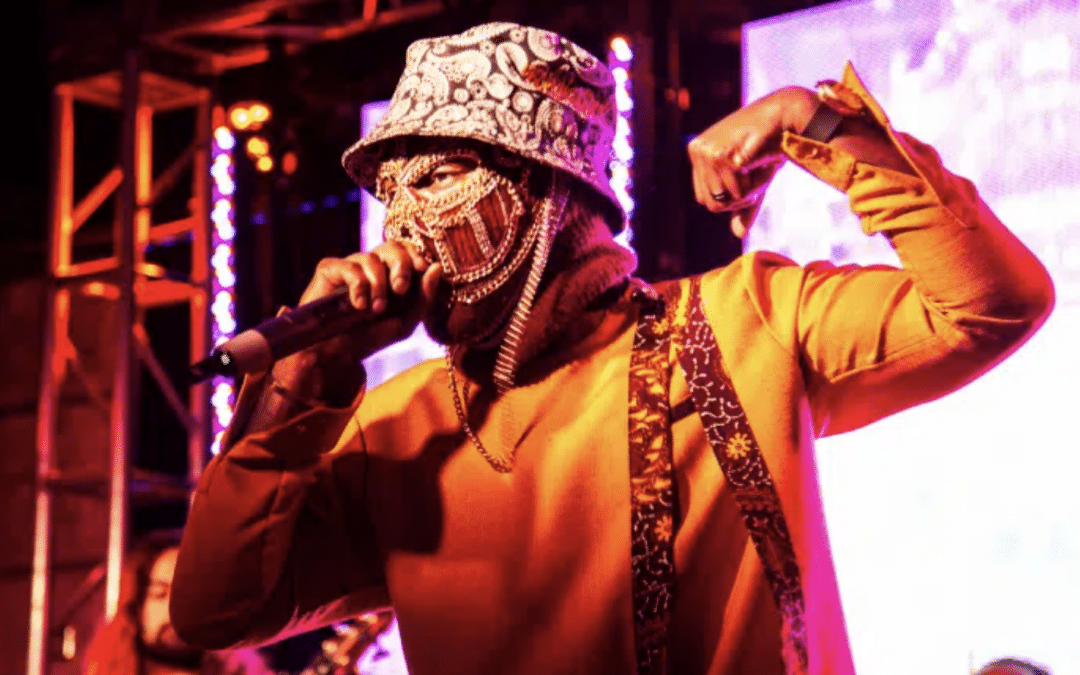
by Francesca | Apr 18, 2024 | Music Marketing, Music Production
Imagine showing up to a venue to play your show and seeing it overflowing with all your fans. Think about the energy in the room, the screaming fans who waited weeks or even months to see you perform… There’s no better feeling. But for that to happen, it takes a ton of networking, planning and consistent promotion for your audience to be ready to go when the time finally comes. In this post, you’ll learn how to promote your next show to ensure it’s everything you’ve dreamed of and more. Here’s the rundown…
10 Best Ways To Sell Out Your Next Show
Reach Out To The Venue
To get started, the first thing you need to do is reach out to the venue and ask what they’ll be doing to promote the show. If the venue is making flyers and distributing them all over town, don’t waste your time doing the same. Whatever they end up doing is a great contribution, but whatever they don’t is up to you to take care of.
Divide and conquer!
Assemble All The Contacts You Can
If you’ve done this before and promotion isn’t news to you, you probably have a decent list of contacts you can reach out to. If you don’t, you can hit up the venue and ask them to send you their media list. In most cases, the venue will have a list ready to send to bands who are out of town, so it shouldn’t be any trouble for them to send you one too. This list usually consists of emails and phone numbers for local music journalists, editors, bloggers, radio show hosts, etc. In addition, this is a great time to use your own connections within your community to grow this list as much as you can.
You can also seek partnerships with local businesses, organizations, influencers, or artists who have a similar target audience. They can help promote your show to their followers, and you can reciprocate by promoting their work as well. Whether you ask your other touring friends or even your management if you have it, these people want to see you succeed!
Music and community go hand in hand. You are not in this alone, so don’t be afraid to utilize your relationships in the industry. If there was ever a time to do so, this is it.
Hit Up Those Contacts
I’m sure you saw this one coming… You really want to make sure that your show is getting as much coverage as possible. A couple months prior to your show is the time to start reaching out to all the people in the list you collected from the previous step and getting yourself on all the local concert calendars. Doing this in advance is crucial, as it gives them time to set everything up without stressing at the last minute. Not to mention the longer your name is out there, the more people have time to see it.
Lastly, and this should go without saying, be nice. Be genuine, humble, and respectful of their time when you reach out. If you can offer them some free tickets, that’s even better. They don’t have to go out of their way to help you, so if they do you should be forever grateful. In this business, relationships are everything. Be remembered for how personable and kind you were, and they’ll have no problem coming through for you again in the future.
Utilize Online Event Platforms
In the digital age, you can’t ignore online event platforms like Eventbrite, Meetup, Bandsintown, Facebook groups and local event directories. These platforms have a built-in audience and can help increase your show’s visibility. Bandsintown even automatically scans your music from services like Apple Music or Spotify when you sign up for the first time so it’ll show up on your profile, too.
Try Paid Advertising
Consider allocating a portion of your budget to online advertising platforms like Google Ads, Facebook Ads or Instagram Ads. With these, you can target your advertisements to reach the right audience based on location, interests and demographics.
There are so many ways to learn more about your fanbase, and this can be vitally important for knowing what your fans want to see. Once you analyze your audience, you can then create your Average Fan’s Profile. You can then use this profile to help make business decisions such as where to tour, where to spend your time on social media, and more.
It’s leg day…
If the venue isn’t creating any posters for your show, do it yourself. People generally respond better to posters that are creative and stand out among the rest. Consider reaching out to local artists in your area to create a dope design together. Once you have the perfect posters/flyers, go out on the town and put them up in places like coffee shops, record stores, smoke shops, on telephone poles or anywhere you damn well please. Anywhere that has a lot of foot traffic is sure to gain the attention of someone who’ll be interested.
How To Start Emailing
About 6 weeks before the gig, it’s time to send out your first round of email invites. (If you’re struggling with constructing and utilizing your mailing list, this post will help you out.) Remember, the first email is the most important. Think about what you want your audience’s first impression of your event to be, and go from there. Include all the details of when it is, where it’s happening and what to expect.
At the same time, you should start announcing the event on all your social media platforms. Start with a big announcement, then remember to keep posting about it throughout the entire time it takes for your show to finally arrive. You want to keep reminding your audience that your show is coming up so they’re well aware and ready to go when the time comes.
In addition to this, this is a great time to offer incentives for your attendees to spread the word about your show. Offer referral discounts, exclusive merchandise, or freebies for anyone who brings in friends or share information on their social media accounts.
Rinse & Repeat
2 weeks after your first round of emails, it’s time to send out a second round of emails. You can either send the update to everyone you sent it to the first time, or you can segment it up and send different emails to different groups of people. (For example, the people who didn’t open it the first time can get something different than the people who already RSVP’d.) If you end up deciding to send it to everyone from the first round of emails, just be sure to make the email look and feel different. (ex: different copy, a new color scheme, etc.) — This email is essentially just a reminder disguised as an announcement. Whatever updates you have about the show, whether its a venue change or you’re offering new merch, be sure to include them in this second round of emails.
Once it’s two weeks out, it’s time to send a third email out to everyone with a sense of urgency to it. Remind them the event is coming up and tell them to get excited for everything to come!
Let’s Talk Socials…
Now this is a given, but social media is one of the best places to promote yourself. From the start of your promo journey to the very end, you should be working on developing engaging content related to your show like behind-the-scenes videos, teasers, interviews and sneak peeks. Every week, you should be sharing content on your website, socials, AND through email to build anticipation and generate interest.
Not sure where or what to post? Your social efforts should stretch from Instagram Reels and TikTok’s to collaborative posts with other artists and cross-promotion across any and all the platforms your fans frequent. You can post recap clips from your last show, teasers of what’s to come, or even do a giveaway for the first 100 people who RSVP. Many artists go Live on IG to hype up big news, too.
Whatever you decide to post, make sure you keep posting consistently before show day finally comes.
Partner with Vendors
If there are any food, jewelry, (or any other vendors for that matter) at the venue, consider hitting them up beforehand and collaborating on some social posts with them. Together, you can hype each other up and get double the reach with each post. Not to mention it’s always good to involve your creative community in anything you do. So when the next event comes around, they’ll think of you and how you may be able to work together again.
Utilize SEO
Taking advantage of Search Engine Optimization is a great way to ensure as many people see your event on Google as possible. For example, using keywords that pertain to your event like “metal show in South Florida” or “Miami event this weekend” can help you rank higher in Google searches. In addition, posting regularly and sharing your content to as many platforms as possible can also boost your visibility.
Final Reminders
Ok, so the show is this week. This final reminder needs to be a bit more personal. If you can, send out a text to everyone who’s coming to remind them one last time. Your effort will be greatly appreciated and people will feel more connected to your band when they receive a personalized reminder from you.
If you don’t get a lot of feedback at the beginning of the promotional period, don’t worry. Most of your RSVP’s will end up coming in a week or so before the show. And when your show day finally comes, make sure to enjoy it! Watch as all your effort and preparation pays off as you pack the venue with excited fans. At the end of the day, every show you do will be a learning experience for the next one. If you don’t sell out this time, you can try again with the next one! It’s all a part of the process of independent musicianship.
Good luck!
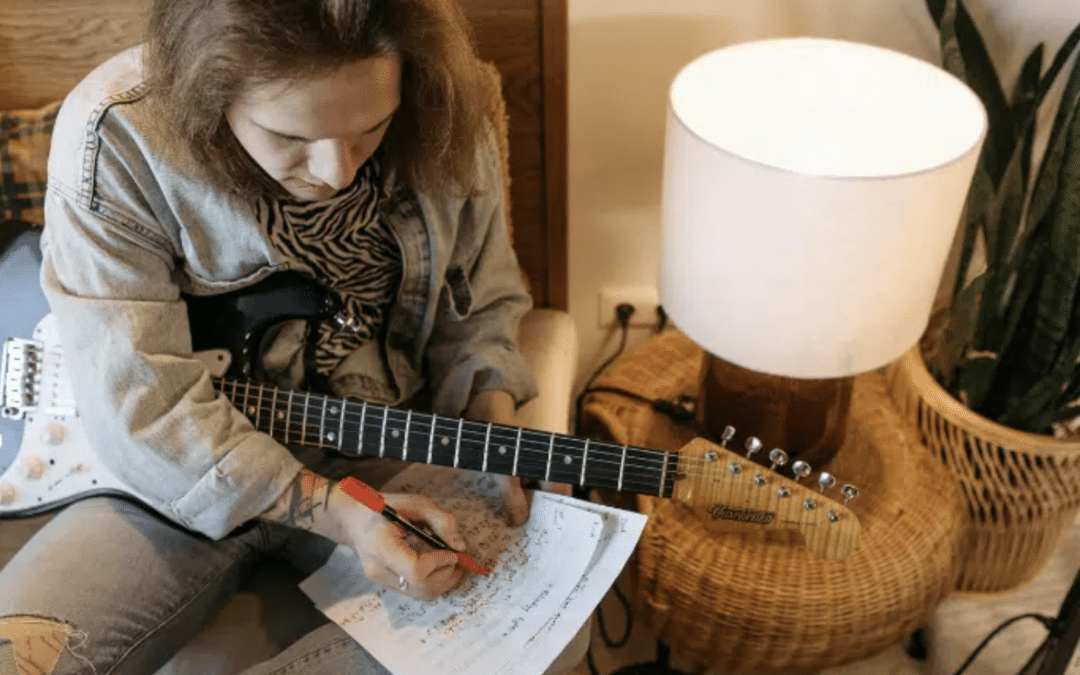
by Francesca | Apr 18, 2024 | Music Marketing, Uncategorized
Self publishing your music comes with a lot of benefits. You don’t have to share your copyrights with anyone, you aren’t bound to any publishing deals and you get ultimate control over where your work is used and how. Keep in mind, self publishing isn’t for everyone. You need to be able to commit significant time and effort to doing everything a publisher would usually do and more. But if this is something that you’re ready to take on, here’s how to do it right.
How To Self Publish Your Music
Let’s Talk Basics…
Self publishing your songs means you take on the role of both the artist and the publisher. Being a self-published writer ultimately means that you hold all the rights to your Intellectual Property (IP), which means you would be in full control of how your compositions are used and would receive all royalties associated with your share of your compositions.
This is awesome, but these perks come with a little extra work. If you’re still interested, here’s what you’ll need to do to self publish your songs…
Step 1: Make Sure Your Music Hasn’t Been Published Yet
If you’ve worked with a distributor before, you may have opted in for publishing services without even realizing it. For example, our publishing administration services are very popular with our own clients. Before you do anything, definitely make sure this doesn’t apply to you.
Step 2: Register with a PRO
In order for you to receive the royalties you’re rightfully owed, your songs need to be properly registered with a Performing Rights Organization like ASCAP, SESAC or BMI. PRO’s rely on the information you provide to determine who they need to pay and how much.
Start setting up your company by going to either www.ascap.com or www.bmi.com to obtain/fill out an application.
Step 3: Sign Up with the MLC
The Mechanical Licensing Collective maintains the world’s most thorough database of music composition copyrights and their owners. They collect mechanical royalties from digital music streaming services and transmit those royalties to copyright holders based on the ownership claims.
Signing up with them ensures that you get all the royalties that are rightfully owed to you. You’ll need to “Connect to Collect” and become a Member of the MLC in order to collect the digital audio mechanical royalties owed to you. // Click here to get started with that process and learn more about it.
Step 4: Time to Promote
Once you’ve completed those steps, you can finally start getting your publisher’s share on top of the writer’s share. Now is the time where the duties of a publisher fall onto you.
Typically, your publisher would be the one networking, seeking out sync deals for TV and film, registering copyrights, negotiating licenses, and more. When you self publish, it’s all on you.
In Conclusion…
Self-publishing typically just entails registering with a PRO to be able to manage and publish your own compositions, but it doesn’t have to end there. If you want to go even further, become a publisher and start your own publishing company! In the meantime, we hope this helped.
As always, you got this. 💪
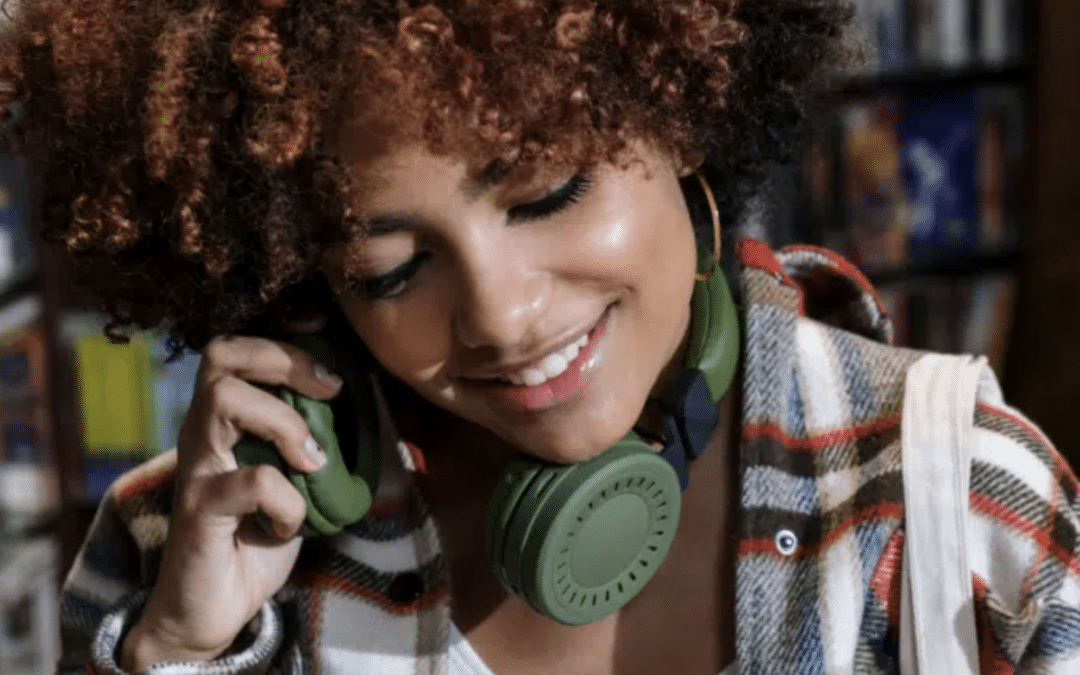
by Francesca | Apr 11, 2024 | Music Marketing
Having trouble getting your music playlisted? This is an issue many independent artists face, but it can be particularly frustrating not knowing exactly why your efforts aren’t paying off. That being said, some of the biggest reasons why you aren’t getting playlisted are easily fixable! From not providing enough marketing drivers to not enough lead time, here are 5 things that may be holding you back…
5 Reasons Why Your Music Isn’t Getting Playlisted
Not Submitting Early Enough
Submitting your music for playlist consideration requires time for the curators to review and potentially add your songs. To ensure you’re giving them ample lead time, we recommend submitting around 4 to 6 weeks before the release date.
This allows playlist editors to evaluate your music properly and consider it for inclusion in their playlists. Rushing submissions at the last minute may result in your music being pushed to the side and not given adequate consideration.
Marketing Drivers
The underlying forces that compel you to buy or pay for certain products and services are called marketing drivers. As an artist, these are the key details you want to be shared with DSP’s like Spotify, Apple Music, TIDAL, YouTube, Soundcloud, Pandora, etc. to help you stand out. When it comes to playlisting, your marketing drivers can help playlist curators better understand your music and its potential appeal to their audience. Not providing enough information here may actually hinder the chances of your song being chosen.
It’s also important to be as honest as possible when providing marketing drivers. Ensure that if you say you have a consistent and active social media plan, you better actually be posting on socials when they check. If you claim your music fits a certain genre, be sure it truly does. The more accurate info you provide, the easier it is for your song to be placed on the best playlist for it.
Your Music Doesn’t Fit The Playlist
If you’re targeting third-party playlists, the best thing you can do is listen to the playlist first, and only pitch songs (if any) that truly fit the vibe. All too often, artists will send a link to their Spotify profile expecting the curator to sit there and go through all their songs to find something to feature. With hundreds, sometimes thousands, of submissions a day, they don’t have time for that. It’s up to you to offer something that’s worth featuring. At the end of the day, they’re doing YOU a favor.
With editorial playlists, all you can do is make sure you’re providing accurate marketing drivers that properly set the vibe of the track so it can be pitched accordingly by our team. The more detailed information you provide, the easier it is for our team to match it with the appropriate playlists.
You’re Not Promoting Your Music Online
It truly surprises me how many artists in this day and age still refuse to improve their online presence. I understand the artistic yearning to be mysterious… but effective promotion is VITAL for driving audience engagement with your music on DSPs. It’s just a part of the game, and ignoring this crucial fact can break your chances of success in so many ways, even aside from just playlisting.
This means actively promoting your music across various channels like Instagram, Twitter, Facebook, TikTok, YouTube, press releases, targeted ad campaigns, and whatever else you can manage. As long as you are engaging with your audience, creating compelling content, and leveraging different promotional strategies, you can significantly increase the visibility of your music. Showing that you are actively working to drive traffic to DSPs, (like Spotify, Apple Music, etc.) greatly increases your likelihood of playlist placements.
You Don’t Have a Consistent Release Plan
Keep in mind… a playlist is not a marketing plan. Consistently releasing music and having a well-defined release plan are two key factors in building momentum as an artist and in turn, attracting playlist curators to your music.
Staying active on socials, having a great website, offering merch on your website and updating it often, interacting with your fans online and in person, posting music videos to go along with your releases, etc., all of this helps to grow your fanbase and spread your music as far as it can go.
Marketing yourself as an artist is just as important as creating the music itself, and many factors go into fostering a strong presence in this insane industry. There are thousands of other artists looking to make it out here, which means you need to go above and beyond to stand out in any way you can.
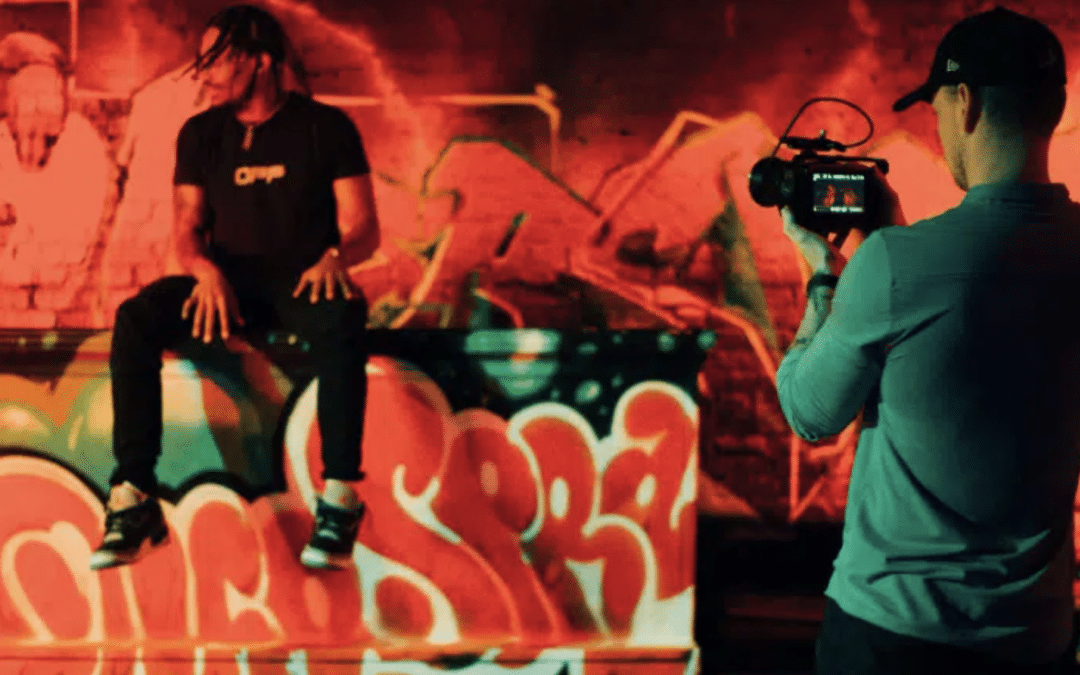
by Francesca | Mar 7, 2024 | Music Marketing
You’ve been prepping for this day for months, excited to finally drop that badass music video you’ve been pouring your heart and soul into. If you want it to perform the best it can, there are some things you can do on release day to improve your chances. In this post, we’ve got some tried and true tips to help you make release day a hit.
Music Video Release Strategy for Better Performance on YouTube
First things first… Channel Optimization
Before we dive in, don’t forget about the basics. When you upload a music video to your YouTube channel, making sure it’s fully optimized is key in setting it up for maximum discoverability. This means making sure your video’s Title and Description correspond, tagging and categorizing your video appropriately and utilizing an eye-catching, yet non-misleading, thumbnail. Once you put out the video, make sure to also set it as the featured video on your channel. That way, it’s easy to find for anyone who visits your channel.
In addition, YouTube has a huge focus on influencing users to do more than just consume the video and leave the platform. They also want them to participate, engage with, and create their own content. How can you do this? This is where the the Multi-Format Release Strategy comes in. If your own strategy follows this guideline, your video will perform better on the platform and be pushed further by YouTube’s algorithm. Here’s how it works…
What is a “Multi-Format Strategy”?
Exactly how it sounds, a Multi-Format Release Strategy is a content strategy that utilizes more than one type of format to promote a release. When it comes to YouTube, this is the best thing you can do to ensure your content is pushed to every corner of the platform, to as many fans as possible.
Although the main squeeze is the music video itself, your release strategy should also include features like YouTube Premieres, Shorts, and more. With YouTube’s billions of months users eager to consume new music, these are your best bet at catching (and keeping) their attention.
Release Day Premiere
YouTube Premieres lets you announce what time your new video will go live and show an announcement for your video in your audience’s feed before it does, giving them plenty of time to prepare to tune in. Once they do, you and your viewers can chat with each other just like a live stream. The more you engage with your fans during the Premiere, the more likely they are to engage with you and your new release even further. (For example… with the YouTube Shorts you create with the release. wink, wink)
How does it work? A public watch page is created for your video to eventually premiere on, then you can share the watch page URL since the watch page is public before the Premiere begins. Premieres show up across YouTube just like regular uploads, so you can find them through search, the homepage, and video recommendations. When it’s time to start your Premiere, remember to do these 5 steps:
- Enable chat replay
- Invite fans to ask questions or answer prompts
- Use moderators to find and reply to comments more quickly
- Engage with fan comments by liking, replying or pinning
- Thank viewers who showed up to support you and this release
Release Day Shorts
Speaking of Shorts… With these, you can create up to 60s of a snapshot to show fans the various sides of you and your art. You can show off your personality, interests, talents and creative flare, all using your new song. YouTube Shorts are also a great way to encourage fans to create their own additional content with your music. Not only does creating a Short with your new track to let your fans know its officially available, it gives them the opportunity to interact with you as an artist. When posting Shorts, consistency here will ensure all the attention is on your new song, whether you create a behind-the-scenes look, promo sneak peak, or whatever else your creative mind can come up with.
Like TikTok, YouTube Shorts have their own built in creation tools you can use to help elevate your videos. Features like the green screen effect, the align tool for seamless transitions, filters and more are all there to help you make the best videos you can. Adding features like these make your videos more engaging, which snags the attention of your viewers and keeps them there for the long-run.
Additional Release Day Videos
Your official music video isn’t the only thing you can put out on release day. It’s always a good idea to be as accommodating as possible for all kinds of fans by releasing alternative types of videos like Art Tracks, Visualizers, Lyric Videos, etc.

Good luck!
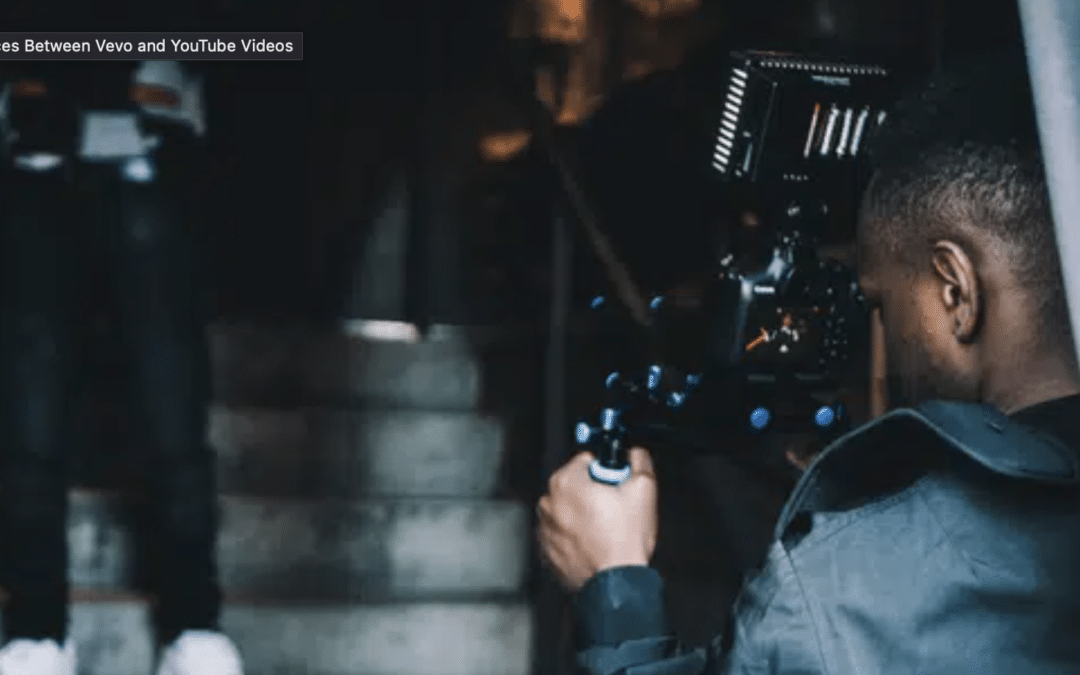
by Francesca | Feb 29, 2024 | Music Marketing
Planning to release a new music video? Congrats! Now it’s time to decide where to drop it. Both YouTube and Vevo offer many great benefits, but they’ve each got their own downsides. Before you release anything, here are some major differences between YouTube and Vevo to consider…
Differences Between Vevo and YouTube Videos
Before we dive in…
Even though your video is technically competing with a larger number of videos on YouTube, that doesn’t mean its capability for exposure is any less. By ensuring your channel and videos are optimized correctly, you can increase the visibility of your videos.
YouTube
1. Access to Creator Studio
- View, analyze and report your channel’s analytics.
- Manage and optimize your individual videos with tags, cards, end screens, etc.
- Set channel and video upload defaults.
2. Total ability to quickly and easily manage all parts of your channel at any time.
3. Ability to upload and take down videos quickly.
4. Livestream capabilities
5. Interaction with your YouTube fans through likes, comments and messages
6. No consideration for feature placement on Vevo.
7. Less likely for videos to go viral unless optimized correctly
Vevo
Vevo is the world’s leading all-premium music video and entertainment platform with over 23 billion monthly views globally. They deliver a personalized and expertly curated experience for audiences to explore and discover music videos, exclusive original programming and live performances from the artists they love on mobile, web and connected TV.
1. You cannot update your Vevo channel yourself, but you can have the below details updated through your distributor per request:
- Artist image
- Channel Banner
- Channel Trailer Video
- Channel Bio (found under “About” tab)
- Google Adwords Account linking
- Playlist Creation
- Video Description update
- Video thumbnail update
2. Vevo makes you look more “legit” as an artist, since mainstream artists also have Vevo channels like Billie Eilish, The Weeknd, Taylor Swift, Harry Styles, etc.
3. Vevo doesn’t guarantee more exposure, but has more potential to go viral, as Vevo videos tend to be surfaced more in searches due to their partnership with YouTube.
4. More likely to get your video featured in a well-exposed playlist, i.e. Vevo playlists.
5. Can be linked to your Official Artist Channel (OAC) so Vevo releases automatically show up on your OAC.
6. YouTube Premieres can be done with Vevo videos and are arranged through your distributor.
7. Vevo can set your personal channel as a Channel Moderator to the Vevo channel to manage comments on your Vevo videos.
8. Vevo also distributes music videos to Apple TV, Pluto TV, Samsung TV and Roku – just to name a few.
Can you release on both platforms?
Yes!
In fact, we recommend it. — Odds are your only content on your YouTube channel isn’t solely official content like music videos, live performances, track videos, or lyric videos (all of which that can be uploaded to your Vevo channel upon approval instead!). You can also upload to your personal channel videos like interviews, behind the scenes, teasers, fan contests, vlogs, etc.
If you decide you want to use your personal YouTube channel for all of these videos and then get a Vevo channel created to release more official content, you can easily get them linked together via an Official Artist Channel through your distributor.
- If you decide to do this though, please make sure you don’t upload the same video twice (once via a distributor to your Vevo channel, and a second upload to your personal channel) since doing so will cause two versions of the video to go live on YouTube – which divides views, confuses fans, and affects overall monetization opportunities.
Because of this, we recommend that you release your official music videos with a distributor to your Vevo channel, and then utilize your personal YouTube channel for interviews, behind the scenes, teasers, fan contests, vlogs, and/or whatever else that has made sense for your brand as an artist.
In Conclusion…
We hope that this article has given you some things to consider and gives you the direction you need to optimize your next video release.
Good luck!








